Vietnam
All Destinations
Vietnam
Blessed with a pleasant climate and beautiful landscapes, Vietnam snakes its way from the Chinese border to the Gulf of Thailand along the Indochina Peninsula, facing both the Eastern Sea and the Gulf of Thailand.
Vietnam opened it’s borders to foreigners in the early 1990s and has seen striking change in the years between. Noticeable contrasts are still evident between the north and south and a journey through the country offers travellers the opportunity to soak up contrasting cultures, tantalising cuisine and spectacular scenery.
Vietnam’s colonial, communist and war-torn history is evident throughout its historic cities where a tapestry of influences manifest themselves in everything from its food to its architecture. While Hanoi is a city of colonial allure with ramshackle 19th century merchants’ houses packed into the picturesque old quarter, Ho Chi Minh City is a cosmopolitan, frenzied and invigorating hub – the country’s engine for its remarkable economic growth.
Visit Halong Bay in the northeast for its emerald waters and thousands of towering limestone islands or cruise along the Mekong Delta, a vast maze of rivers, swamps and islands in the south, home to floating markets, Khmer pagodas and villages surrounded by rice paddies.
Centrally you’ll discover Huế and it’s 19th-century Citadel, or Hội An on the central coast known for its well-preserved Ancient Town, cut through with canals. Those who enjoy trekking should head to Sa Pa in the northwest overlooking the terraced rice fields of the Muong Hoa Valley where colourful hill tribes, such as the Hmong, Tay and Dao, make up much of the town’s local population.
Quick Facts
Capital
Hanoi
Population
92 million
Area
329,247 sq km (127,123 sq miles)
Major Languages
Vietnamese
Major religion
Buddhism
Monetary Unit
Dong
Flight time from London
11.5
Time Difference
GMT + 7
When to go
The weather in Vietnam is very regional meaning there is almost always a good time to visit somewhere in the country.
In the north, including Hanoi, hot and humid weather with high rainfall can be expected between May to October; between November and April it is cooler and dry, particularly in the far north in December & January which can experience very cold temperatures.
In the centre of the country, January to August boasts dry, hot weather with temperatures in the mid-30°C’s. High rainfall can be experienced between September and November.
Southern Vietnam sees generally dry and hot weather between November and April, with cooler, yet still warm temperatures alongside rain from May to October. The highest of the rainfall can be expected in June, July & August.
- J
- F
- M
- A
- M
- J
- J
- A
- S
- O
- N
- D
- High Season
- Mid Season
- Shoulder Season
Highlights
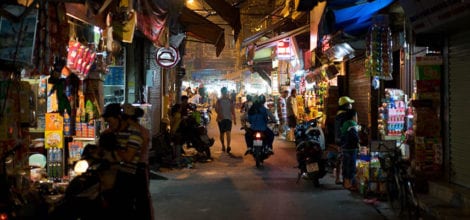
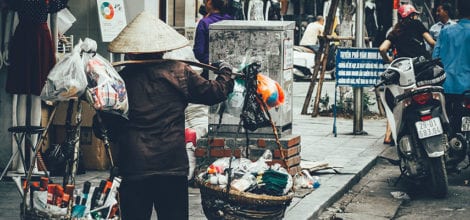
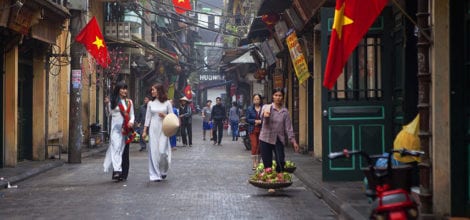
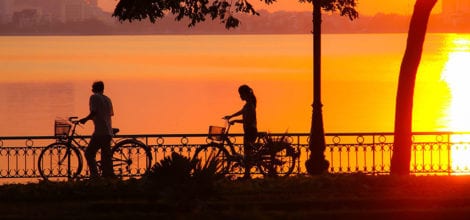
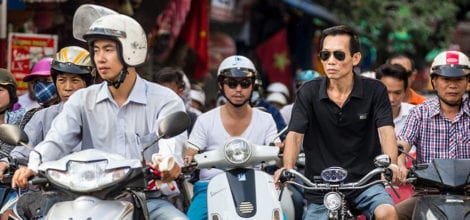
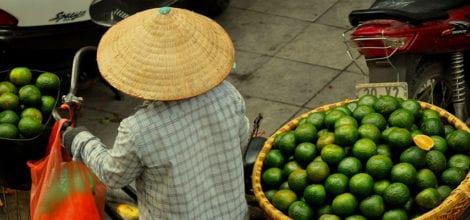
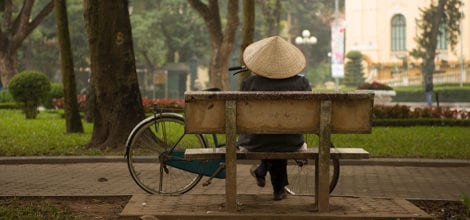
Hanoi
Strong influences from the French and Chinese are evident in Hanoi’s architecture and culture, Ancient Hanoi manages to interlace seamlessly with the contemporary and dynamic vigour of the modern city it is today.
Old Hanoi comprises of four districts: Hoàn Kiếm, Ba Đình, Hai Bà Trưng and Đống Đa, in contrast to the skyscrapers and shopping malls in the newer Western districts Cau Giay, Thanh Xuan, Ha Dong and Nam Tu Liem.
By comparison to Ho Chi Minh, the country’s political capital and second largest city has a feeling of intimacy about it. Colonial merchants’ houses, Confucian temples and street vendors dishing out magnificent food on every corner gives Hanoi much of its charm. Discover riotous markets, museums and historical homes along with high-class boutiques and a surplus of fine dining establishments.
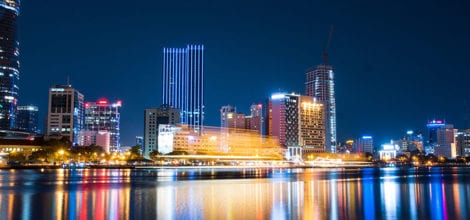
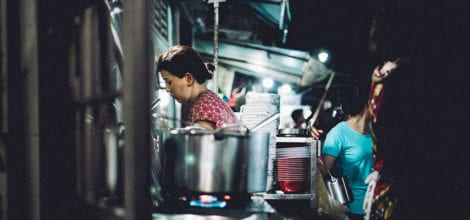
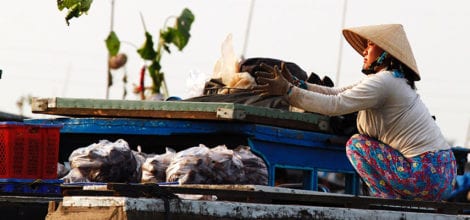
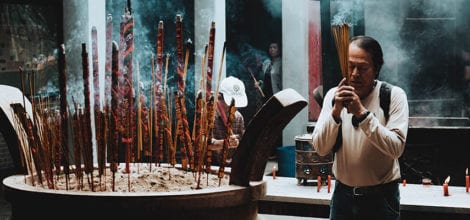
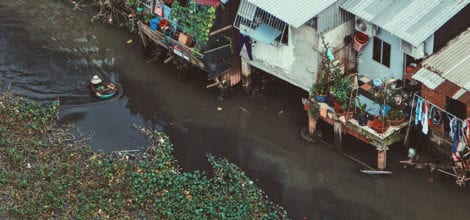



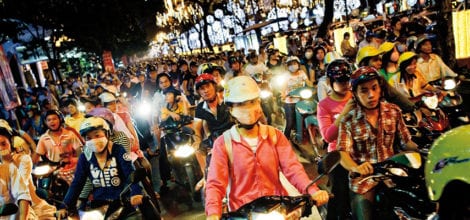

Ho Chi Minh City (Saigon)
Formerly Saigon, Ho Chi Minh City was the capital of South Vietnam and today is the largest of the country’s cities. Dominated by the high-rise structures of the 20th century, and the buzz of scooters which purr through the streets, the ‘Pearl of the Orient’ is as intoxicating today as it ever was.
Ho Chi Minh City began as a Khmer fishing village built on marshland and remained in the hands of the Cambodians until the Vietnamese arrived in the 17th Century. With the village and entire lower Mekong river delta, formally occupied by Vietnam, it became known as Saigon and soon grew into a major settlement. Saigon then fell to the French and Spanish and was filled with Western architecture, much of which is still in evidence today.
Following a chaotic variety of occupations before, during and following the war, while Ho Chi Minh City is today the nation’s economic hub, pockets of the old charm can still be discovered throughout the city, with street food for sale at every turn leading to Colonial mansions, and ancient pagodas and palaces.
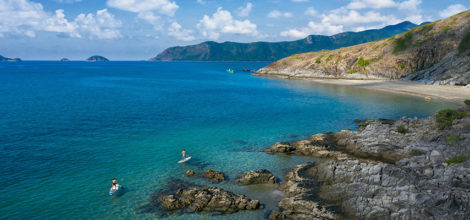

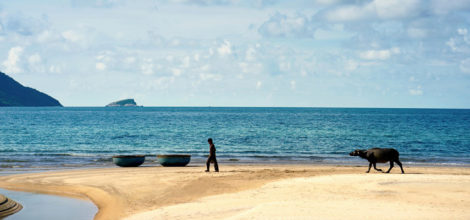
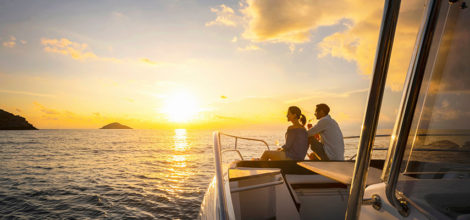
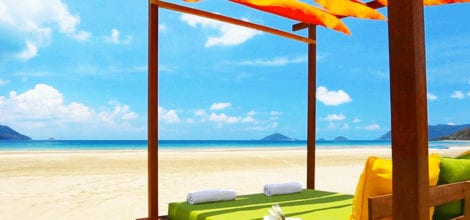
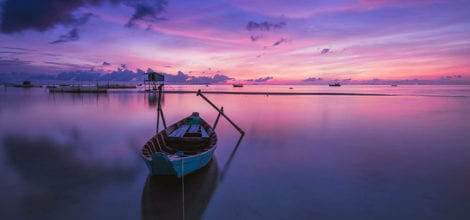

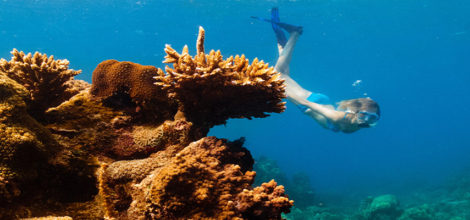
Southern Islands
The perfect final stop to the end of a tour of Vietnam, the beaches along the southern coastline and surrounding islands are picture perfect and host a delightful range chic retreats and boutique hotels to recharge and energise.
Con Dao comprises 16 islands, the largest of which is Con Son, the entire archipelago sitting within the Con Dao National Park. Geographically separated from the mainland roughly 15,000 years ago, the islands have developed a variety of unique flora and fauna with 80% of the land remaining jungle, swarming with wildlife such as the endemic black squirrel and the crab eating macaque.
A prison island during the French colonial era and later in the throws of the Saigon regime, Con Dao’s old prison buildings are still standing and are open to the public as is a small museum tracing the island’s history. Con Dao, however, is also an island of colossal natural beauty with green hills, uninhabited beaches with hidden lagoons and vast coral reefs making for and excellent underwater environment to explore.
Circled by some of the most stunning beaches Vietnam has to offer, Phú Quốc is mountainous and densely forested Island, infamous for serving up the best seafood in the country. Relatively unspoilt when compared to the likes of Phuket, Phú Quốc has been voted to have “The Cleanest and Most Beautiful Beach of the World”.
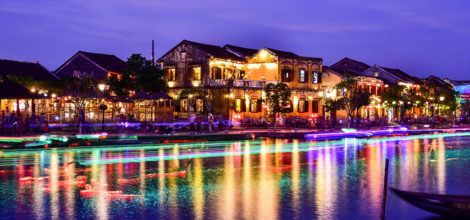
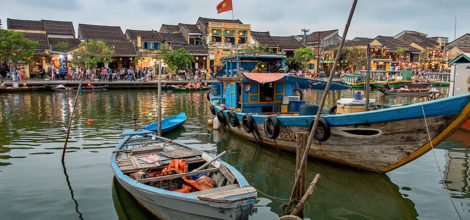



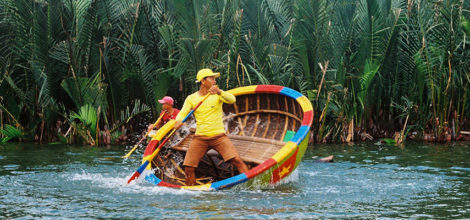


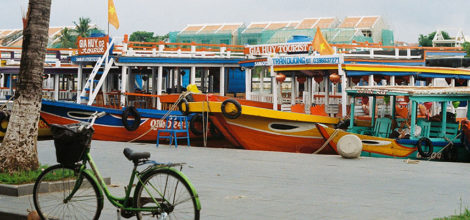
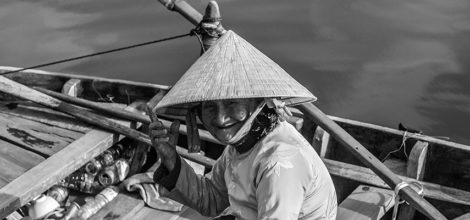
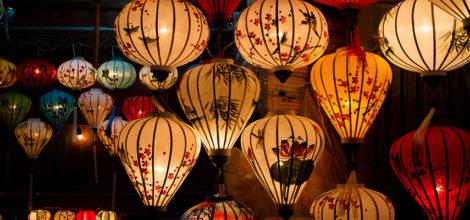
Hoi An
Graceful, historic Hoi An is Vietnam’s most atmospheric and delightful town. Once a major port, it boasts the grand architecture and beguiling riverside setting that befits its heritage, and the 21st-century curses of traffic and pollution are almost entirely absent.
The face of the Old Town has preserved its incredible legacy of tottering Japanese merchant houses, Chinese temples and ancient tea warehouses – though, of course, residents and rice fields have been gradually replaced by tourist businesses.
Lounge bars, boutique hotels and a glut of tailor shops are very much part of the scene here. And yet, down by the market and over on Cam Nam Island, you’ll find life has changed little. Travel a few kilometres further – you’ll find some superb bicycle, motorbike and boat trips – and some of central Vietnam’s most enticingly laid-back scenery and beaches are within easy reach.
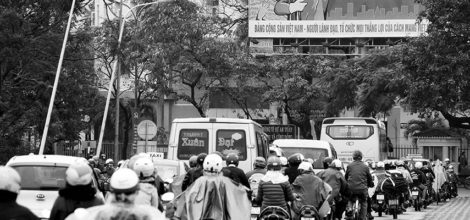
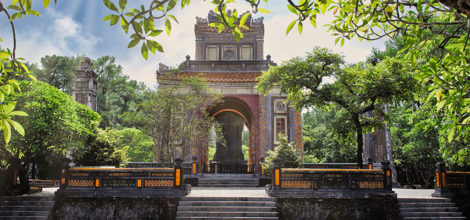
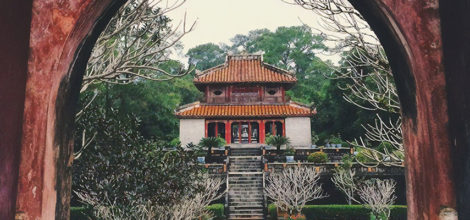
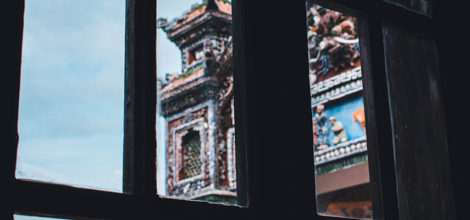
Hue
Pronounced ‘hway’, this deeply evocative capital of the Nguyen emperors still resonates with the glories of imperial Vietnam, even though many of its finest buildings were destroyed during the American War.
Hue owes its charm partly to its location on the Perfume River – picturesque on a clear day, atmospheric even in less flattering weather. Today the city blends new and old as sleek modern hotels tower over crumbling 19th-century Citadel walls.
A few touts are a minor hassle, but Hue remains a tranquil, conservative city with just the right concentration of nightlife.
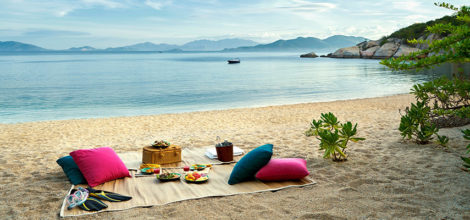
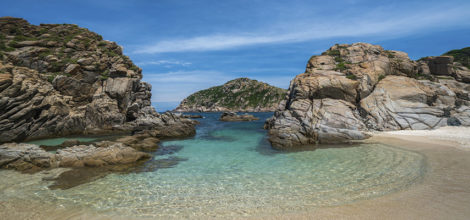
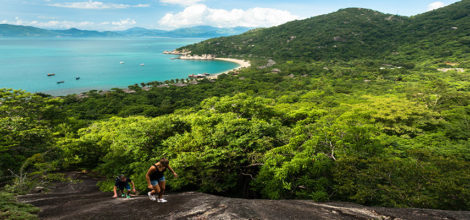
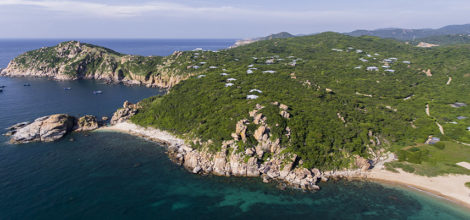
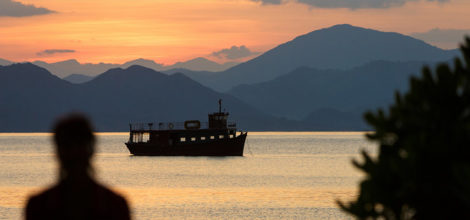
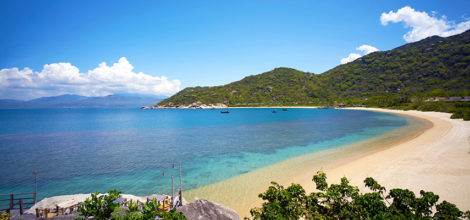


Central Vietnam Beaches
Central Vietnam is endowed with several beautiful beaches with white sand, turquoise water, and stunning views.
Central Vietnam’s beach-trimmed coast also plays host to two UNESCO World Heritage Sites, (Hue and Hoi An), which allows for some cultural exploration on top of your beach time.
Some bigger hotels are starting to appear, but the white-sand beaches are so long that they retain a quiet air. The waters are clear and turquoise, lending themselves to snorkelling and scuba diving, as well as fishing.
Away from the sea, Bach Ma National Park is a two-hour drive from Hoi An — the place the locals come to relax in the barely touched jungle, swimming in natural pools shaped by waterfalls.
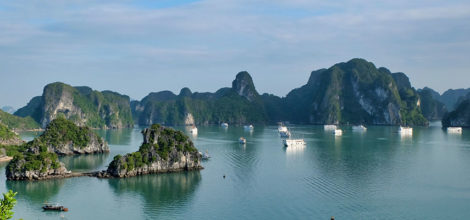
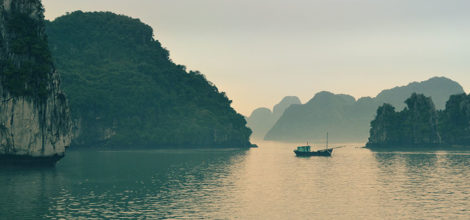
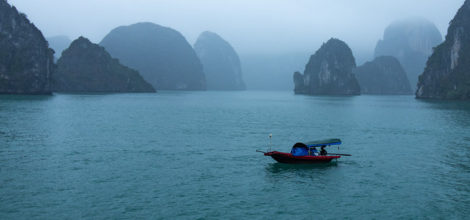
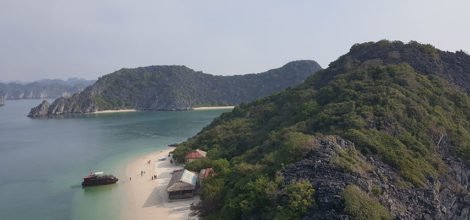
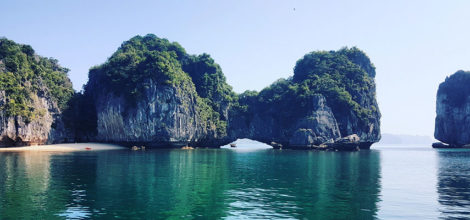
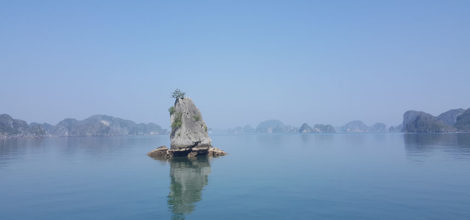
Halong Bay
Towering limestone pillars and tiny islets topped by forest rise from the emerald waters of the Gulf of Tonkin. Designated a World Heritage Site in 1994, Halong Bay’s scatter of islands, dotted with wind- and wave-eroded grottoes, is a vision of ethereal beauty and, unsurprisingly, northern Vietnam‘s number one-tourism hub.
Sprawling Halong City (also known as Bai Chay) is the bay’s main gateway, but its high-rises are a disappointing doorstep to this site. Most visitors opt for cruise tours that include sleeping on board within the bay, while a growing number are deciding to eschew the main bay completely, heading straight for Cat Ba Island from where trips to less-visited but equally alluring Lan Ha Bay are easily set up.
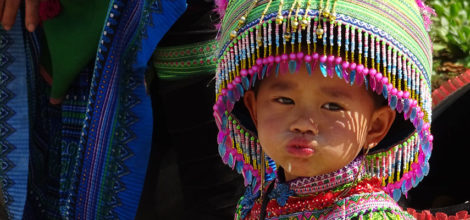

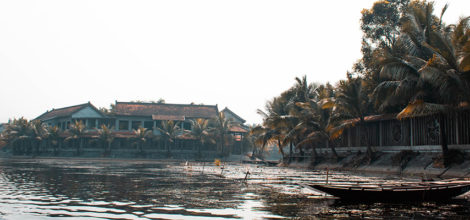

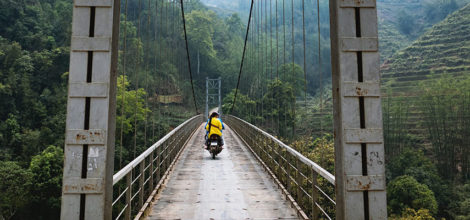
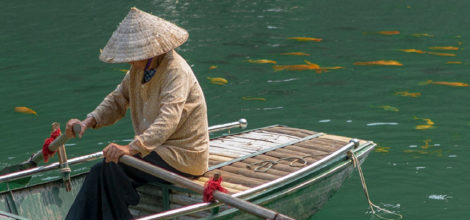
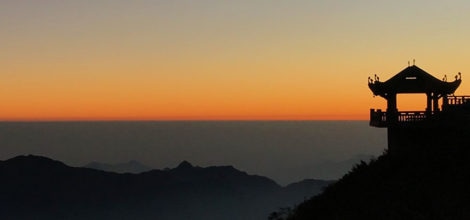
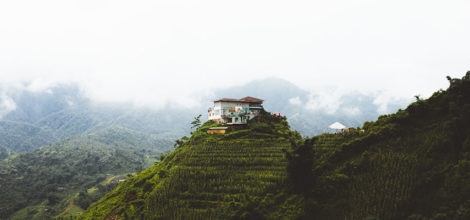
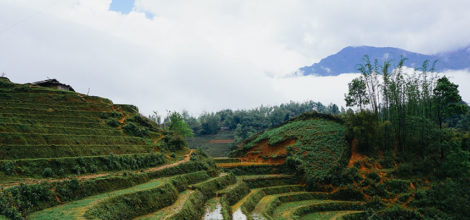
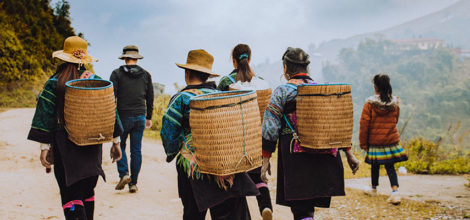
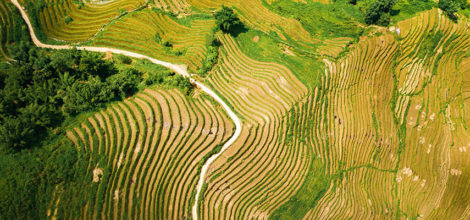
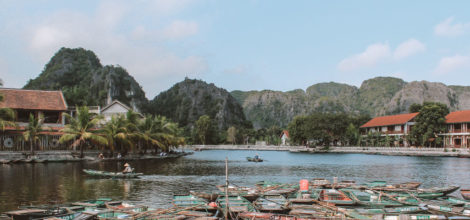


Northern Vietnam
This is Vietnam‘s big-sky country; a place of rippling mountains, cascading rice terraces and the winnowed-out karst topography for which the region is famed.
Halong Bay’s seascape of limestone towers is the view everyone’s here to see, but the karst connection continues inland, to Ba Be’s sprawling lakes and the knobbly topped peaks of Ha Giang, until it segues into the evergreen hills of the northwest highlands.
Not to be outdone by the scenery, northern Vietnam‘s cultural kaleidoscope is just as diverse. In this heartland of hill-tribe culture, villages snuggle between paddy-field patchworks outside of Sapa and the scarlet headdresses of the Dzao and the Black Hmong’s indigo fabrics add dizzying colour to chaotic highland markets.
The twisting ribbon-roads winding north from Hanoi reveal a rural world far removed from Vietnam‘s horns-a-honking big-city streets. If you’re up for some road-tripping, this is the place to do it.
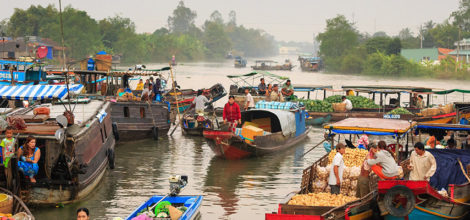

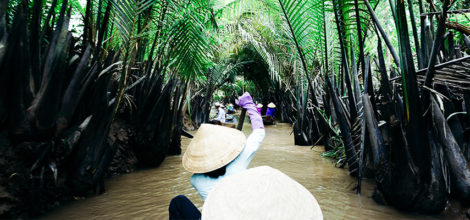
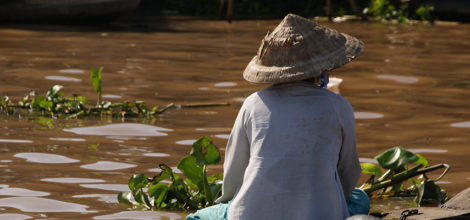
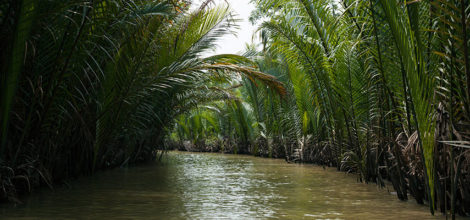
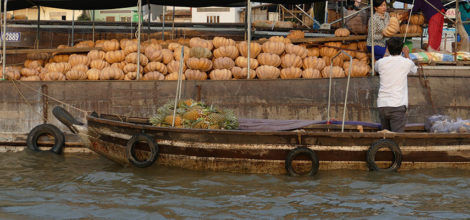
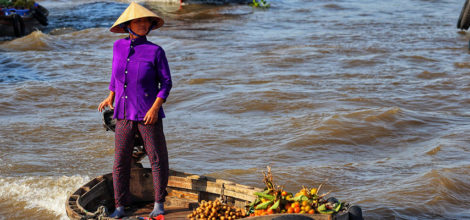
Mekong Delta
The ‘rice bowl’ of Vietnam, the delta is carpeted in a dizzying variety of greens. It’s a water world that moves to the rhythms of the mighty Mekong, where boats, houses and markets float upon the innumerable rivers, canals and streams that criss-cross the landscape like arteries.
The bustling commerce of its towns contrasts sharply with the languid, almost-soporific pace of life in the countryside. Here buffalo wallow in rice paddies, coconut- and fruit-laden boats float slowly along the mud-brown waters, and two-wheeled exploration of the narrow lanes is amply rewarded with a true taste of rural hospitality (and delicious river fish).
Elsewhere, mangrove forests teem with a wealth of bird life and bristle with the remains of Viet Cong bunkers, ornate Khmer pagodas and Buddhist temples reaching for the sky, while off-coast islands offer white-sand beaches and tropical hideaways to some, and pirate havens to others.
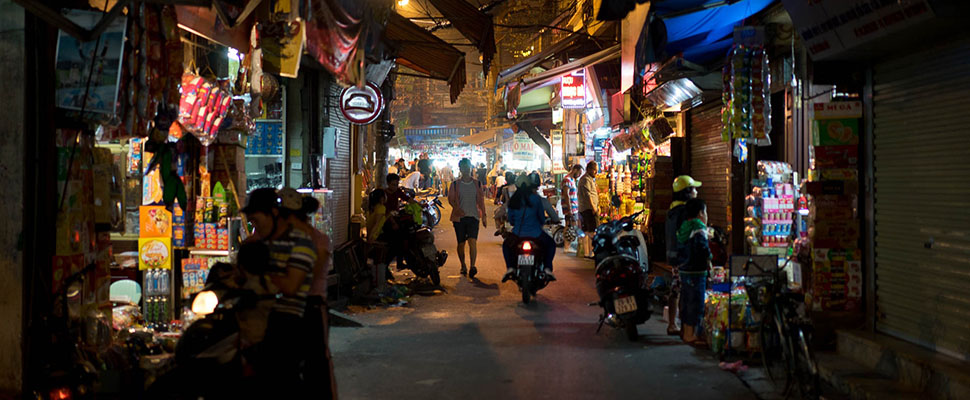
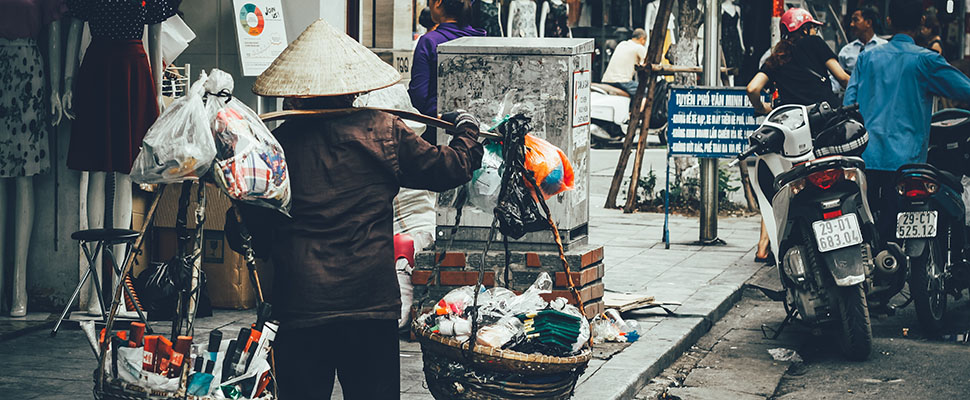
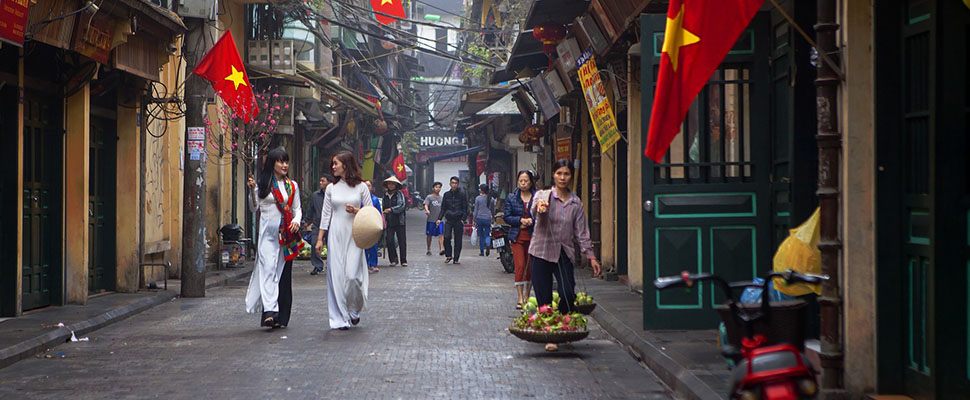
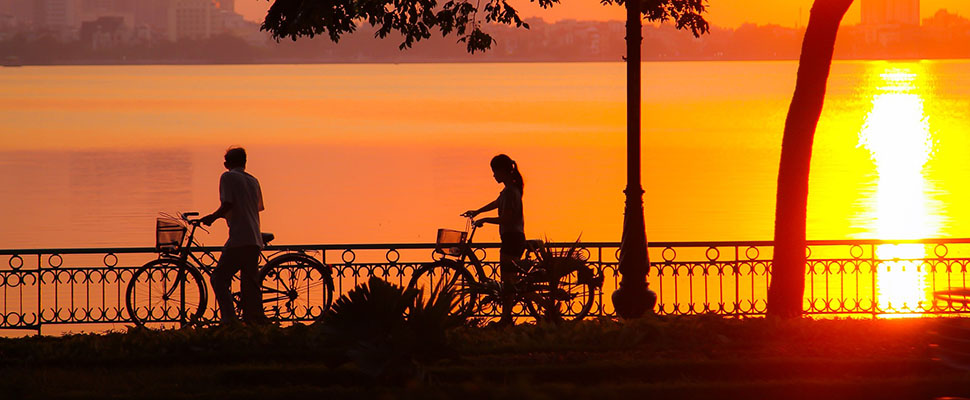

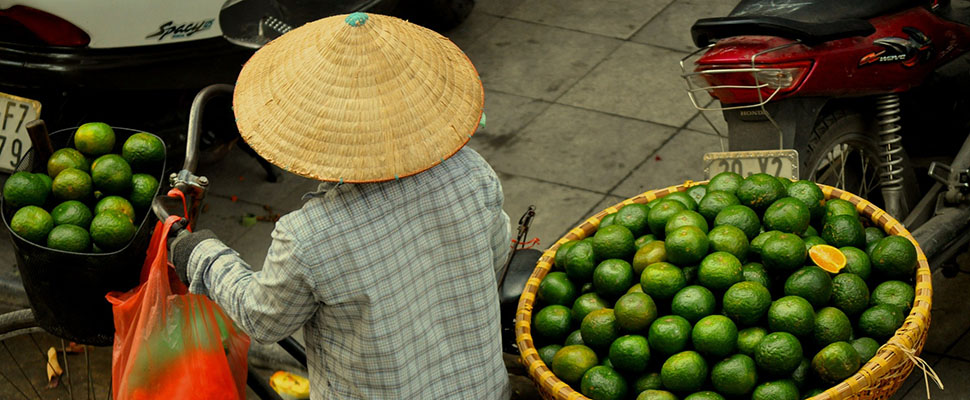
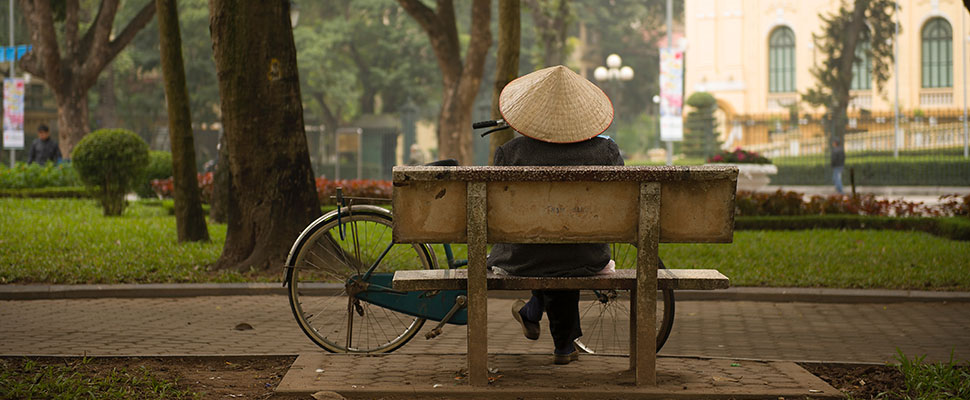
Hanoi
Strong influences from the French and Chinese are evident in Hanoi’s architecture and culture, Ancient Hanoi manages to interlace seamlessly with the contemporary and dynamic vigour of the modern city it is today.
Old Hanoi comprises of four districts: Hoàn Kiếm, Ba Đình, Hai Bà Trưng and Đống Đa, in contrast to the skyscrapers and shopping malls in the newer Western districts Cau Giay, Thanh Xuan, Ha Dong and Nam Tu Liem.
By comparison to Ho Chi Minh, the country’s political capital and second largest city has a feeling of intimacy about it. Colonial merchants’ houses, Confucian temples and street vendors dishing out magnificent food on every corner gives Hanoi much of its charm. Discover riotous markets, museums and historical homes along with high-class boutiques and a surplus of fine dining establishments.

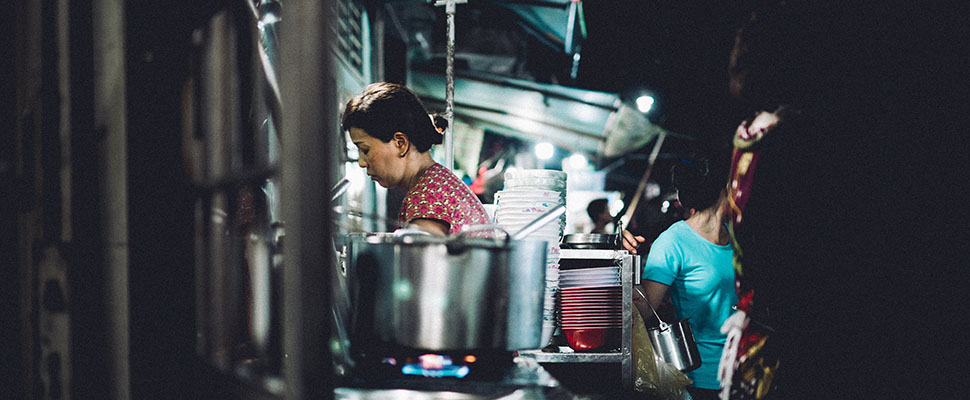


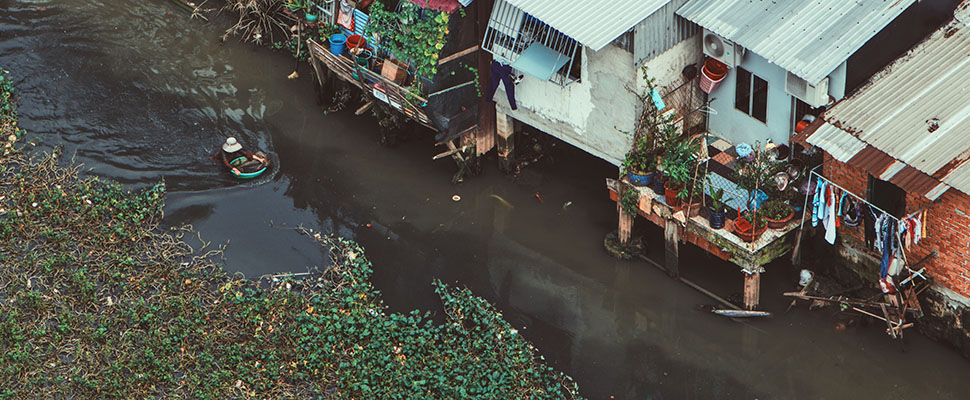
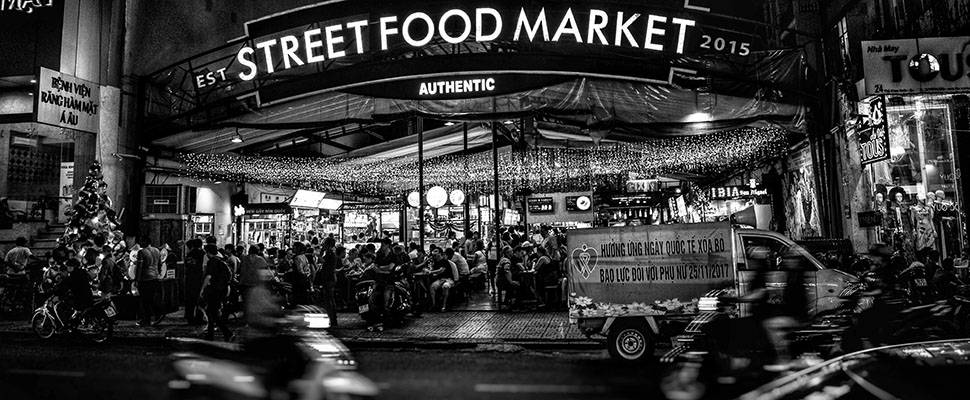

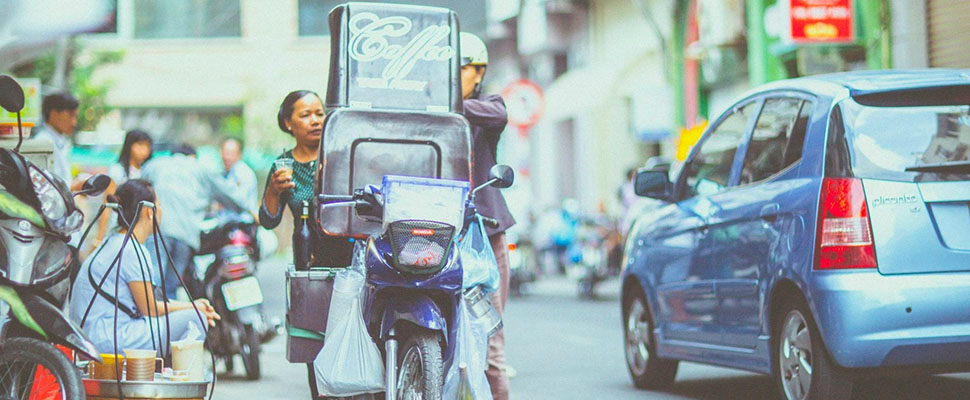
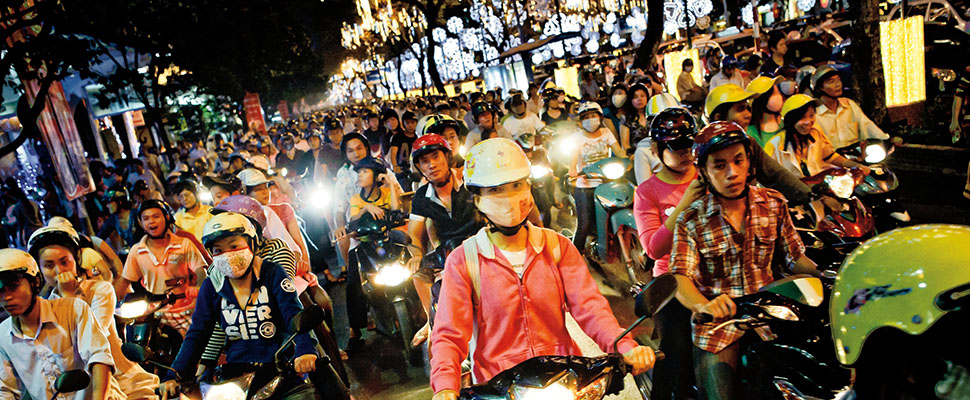
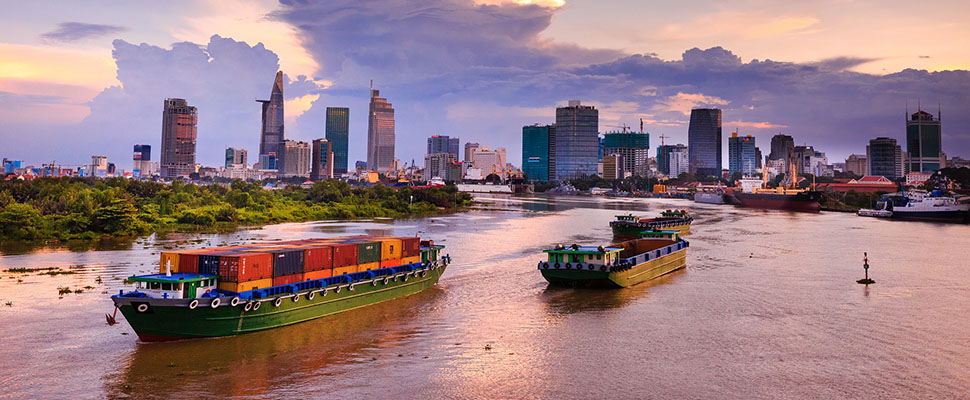
Ho Chi Minh City (Saigon)
Formerly Saigon, Ho Chi Minh City was the capital of South Vietnam and today is the largest of the country’s cities. Dominated by the high-rise structures of the 20th century, and the buzz of scooters which purr through the streets, the ‘Pearl of the Orient’ is as intoxicating today as it ever was.
Ho Chi Minh City began as a Khmer fishing village built on marshland and remained in the hands of the Cambodians until the Vietnamese arrived in the 17th Century. With the village and entire lower Mekong river delta, formally occupied by Vietnam, it became known as Saigon and soon grew into a major settlement. Saigon then fell to the French and Spanish and was filled with Western architecture, much of which is still in evidence today.
Following a chaotic variety of occupations before, during and following the war, while Ho Chi Minh City is today the nation’s economic hub, pockets of the old charm can still be discovered throughout the city, with street food for sale at every turn leading to Colonial mansions, and ancient pagodas and palaces.
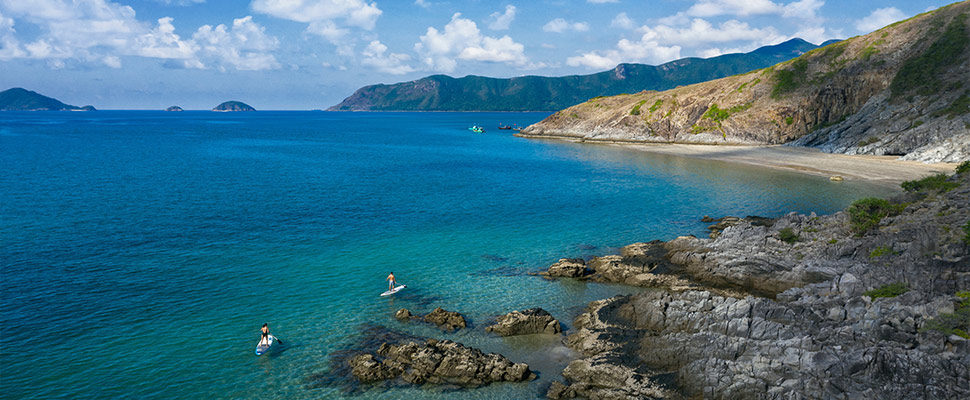
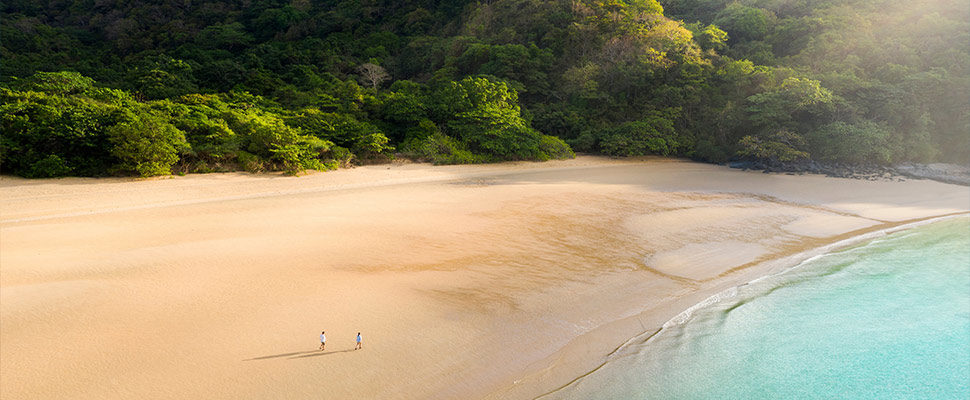
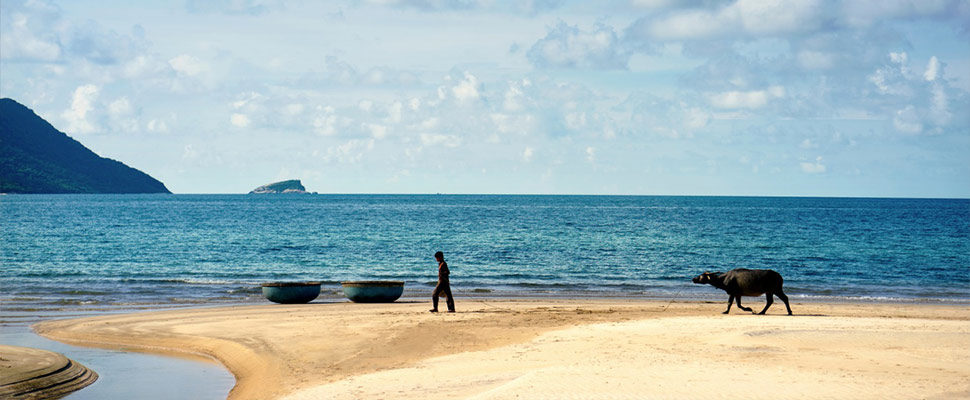
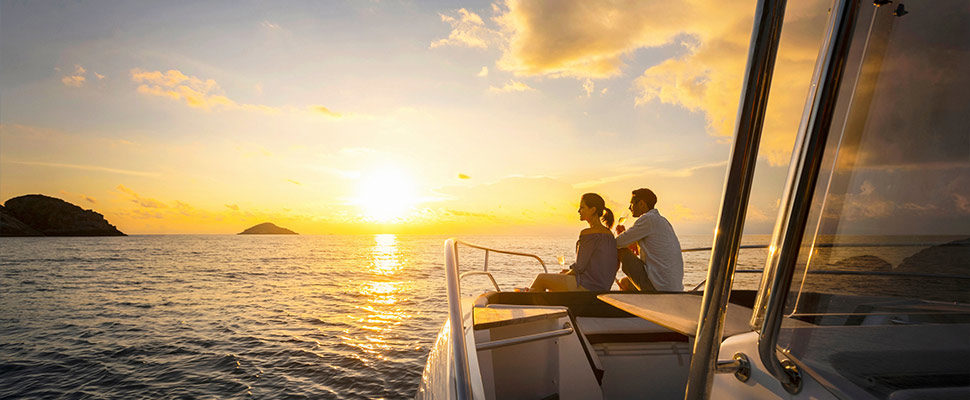
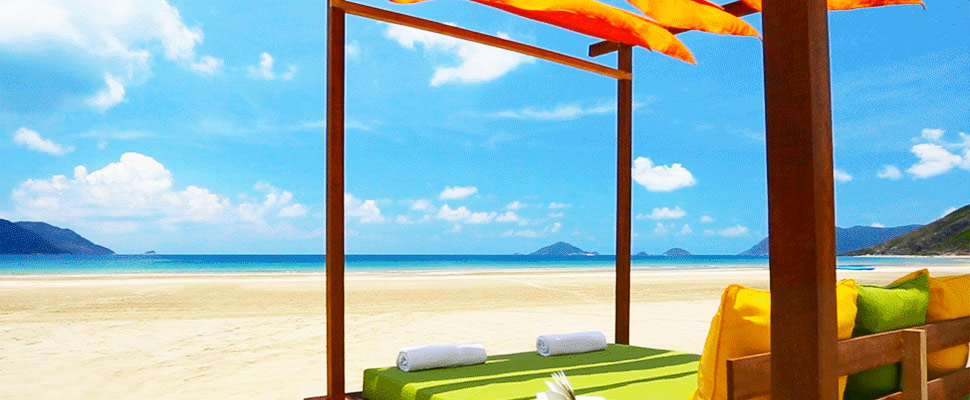
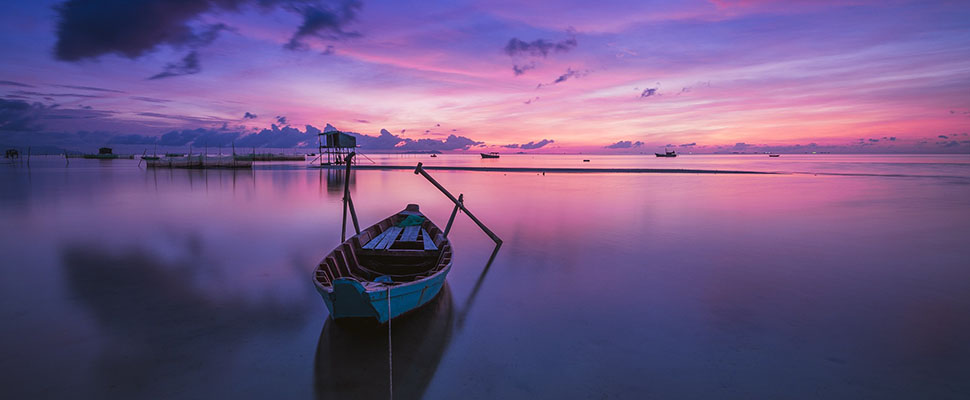
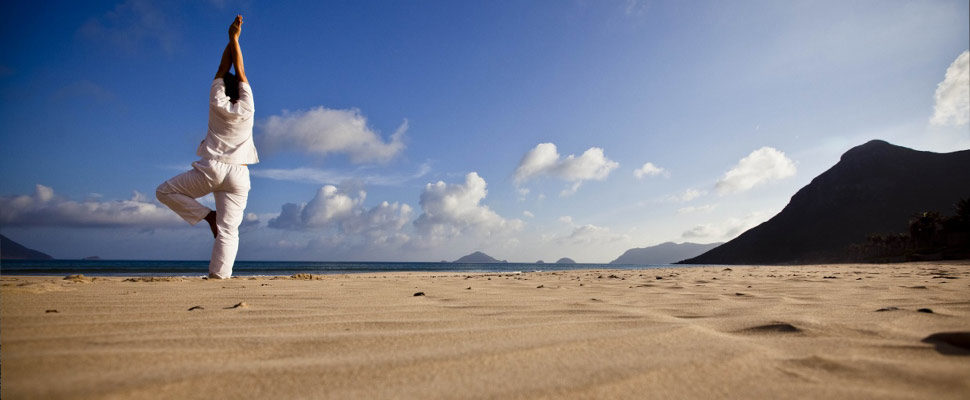
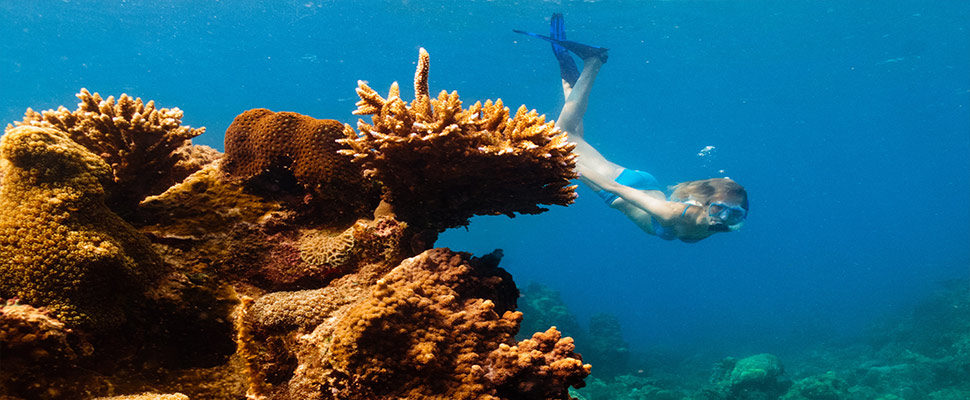
Southern Islands
The perfect final stop to the end of a tour of Vietnam, the beaches along the southern coastline and surrounding islands are picture perfect and host a delightful range chic retreats and boutique hotels to recharge and energise.
Con Dao comprises 16 islands, the largest of which is Con Son, the entire archipelago sitting within the Con Dao National Park. Geographically separated from the mainland roughly 15,000 years ago, the islands have developed a variety of unique flora and fauna with 80% of the land remaining jungle, swarming with wildlife such as the endemic black squirrel and the crab eating macaque.
A prison island during the French colonial era and later in the throws of the Saigon regime, Con Dao’s old prison buildings are still standing and are open to the public as is a small museum tracing the island’s history. Con Dao, however, is also an island of colossal natural beauty with green hills, uninhabited beaches with hidden lagoons and vast coral reefs making for and excellent underwater environment to explore.
Circled by some of the most stunning beaches Vietnam has to offer, Phú Quốc is mountainous and densely forested Island, infamous for serving up the best seafood in the country. Relatively unspoilt when compared to the likes of Phuket, Phú Quốc has been voted to have “The Cleanest and Most Beautiful Beach of the World”.

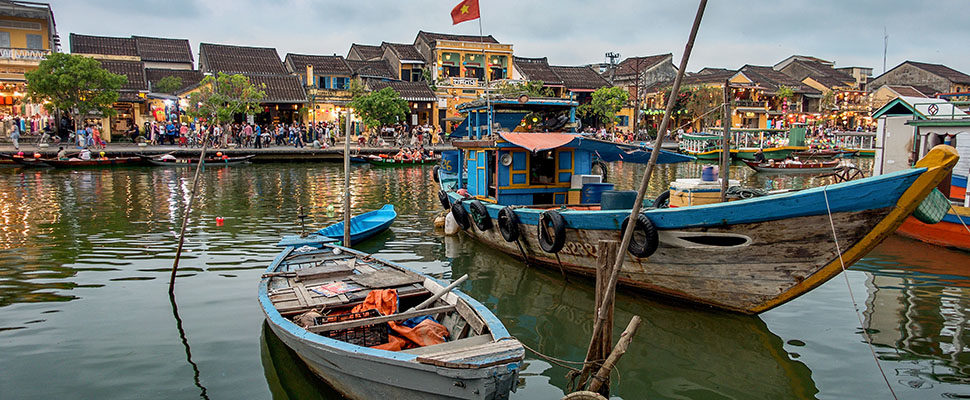

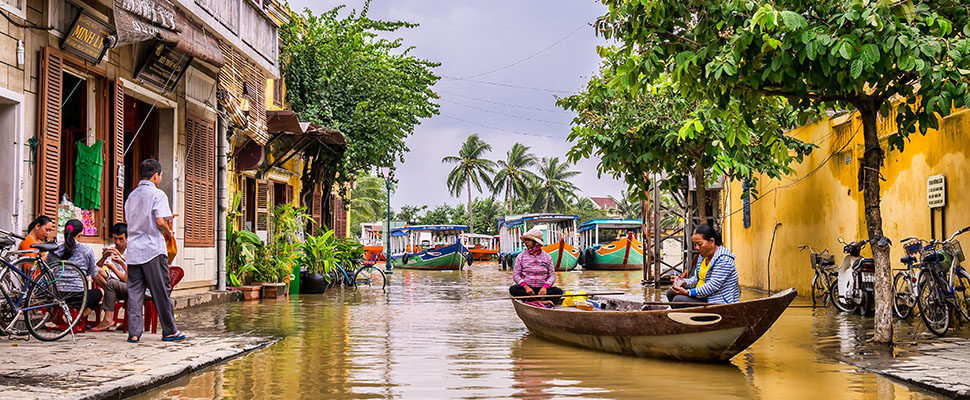

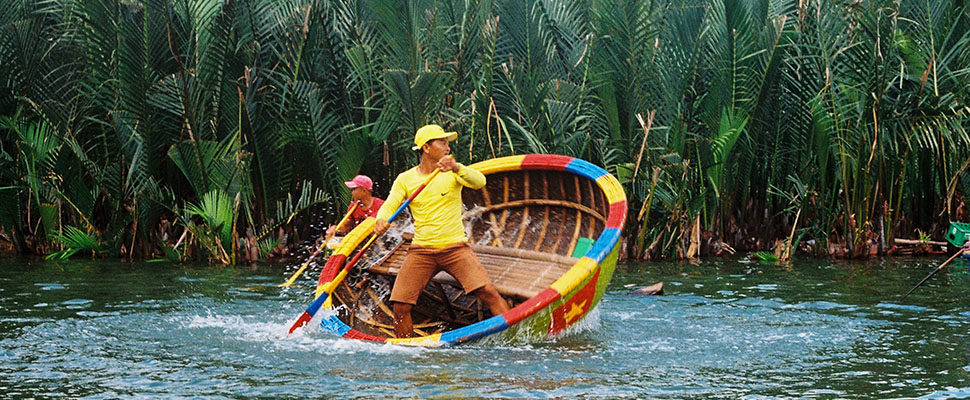
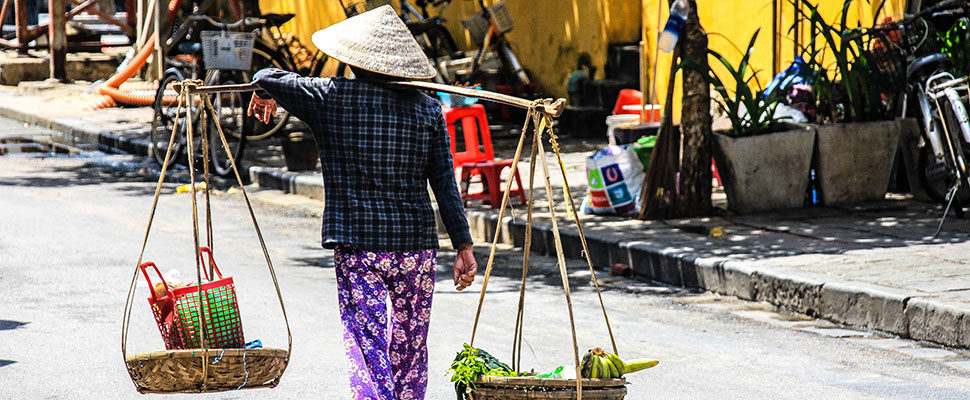
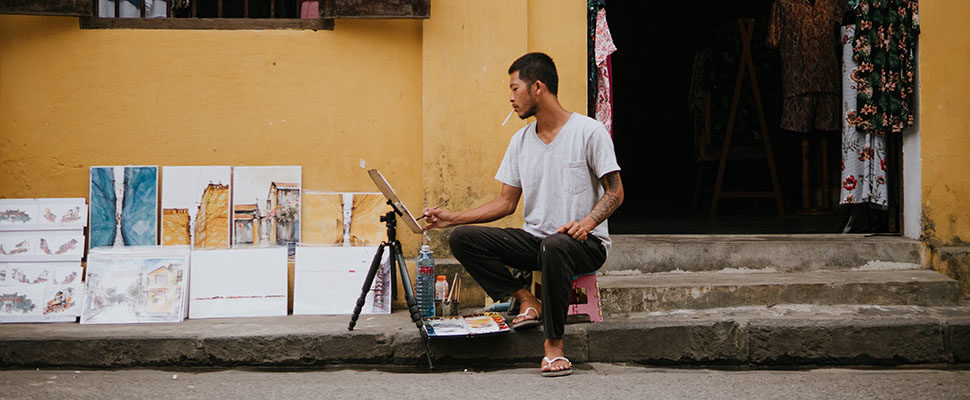
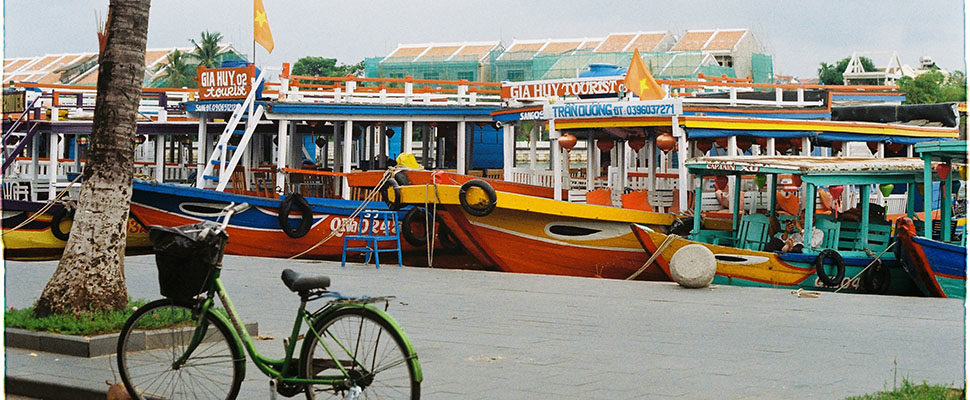
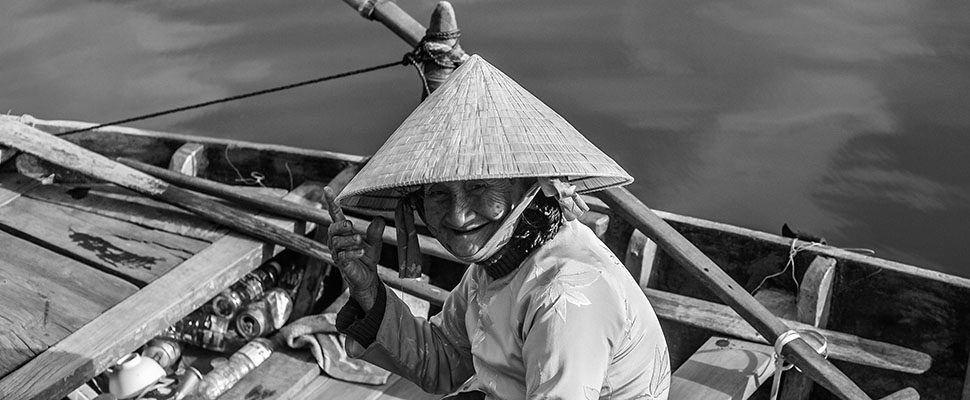
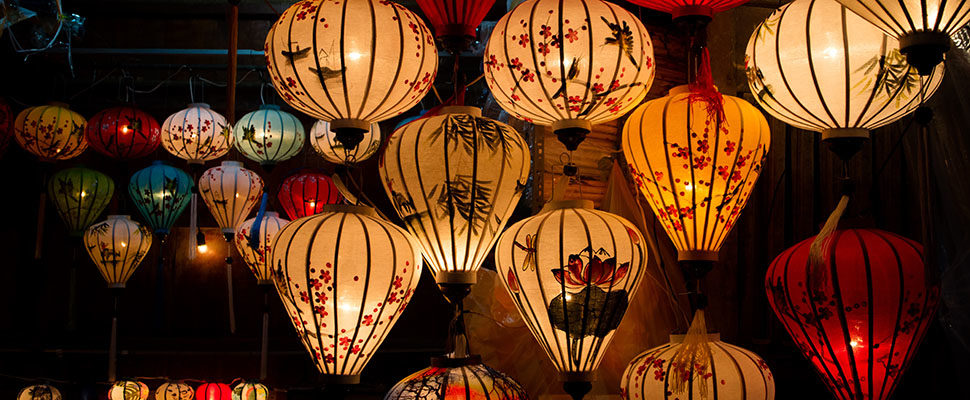
Hoi An
Graceful, historic Hoi An is Vietnam’s most atmospheric and delightful town. Once a major port, it boasts the grand architecture and beguiling riverside setting that befits its heritage, and the 21st-century curses of traffic and pollution are almost entirely absent.
The face of the Old Town has preserved its incredible legacy of tottering Japanese merchant houses, Chinese temples and ancient tea warehouses – though, of course, residents and rice fields have been gradually replaced by tourist businesses.
Lounge bars, boutique hotels and a glut of tailor shops are very much part of the scene here. And yet, down by the market and over on Cam Nam Island, you’ll find life has changed little. Travel a few kilometres further – you’ll find some superb bicycle, motorbike and boat trips – and some of central Vietnam’s most enticingly laid-back scenery and beaches are within easy reach.
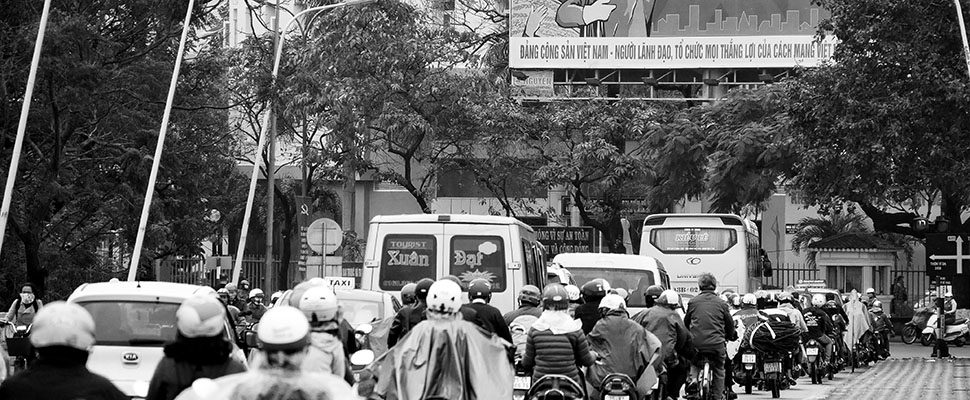
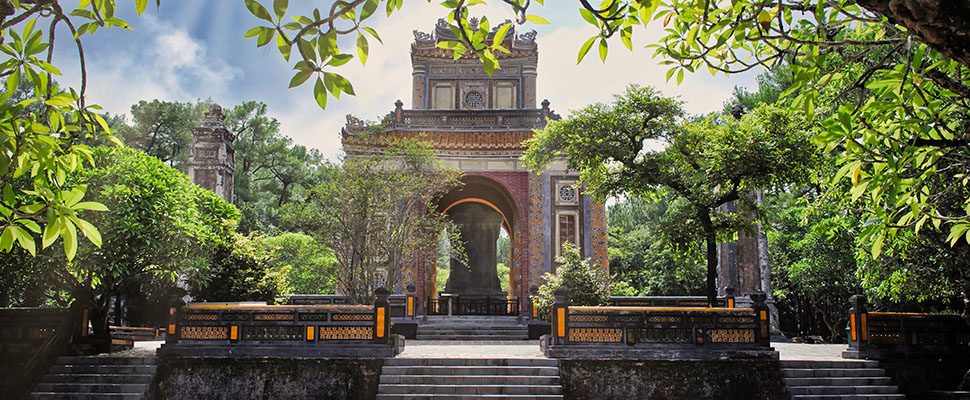
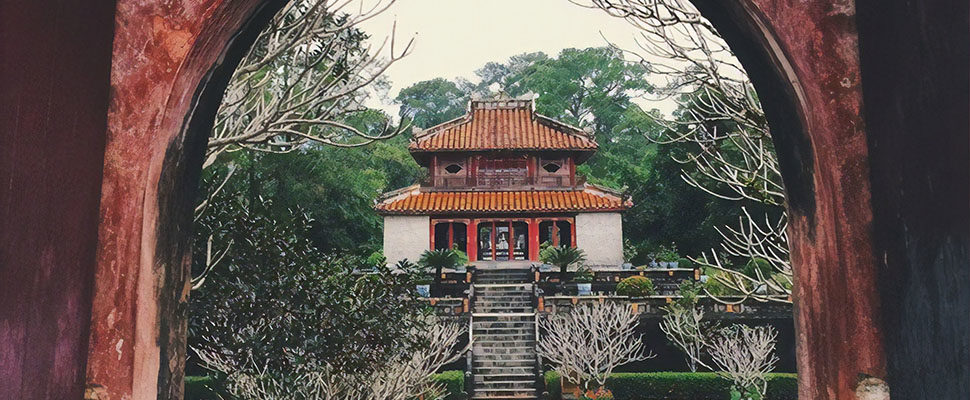

Hue
Pronounced ‘hway’, this deeply evocative capital of the Nguyen emperors still resonates with the glories of imperial Vietnam, even though many of its finest buildings were destroyed during the American War.
Hue owes its charm partly to its location on the Perfume River – picturesque on a clear day, atmospheric even in less flattering weather. Today the city blends new and old as sleek modern hotels tower over crumbling 19th-century Citadel walls.
A few touts are a minor hassle, but Hue remains a tranquil, conservative city with just the right concentration of nightlife.
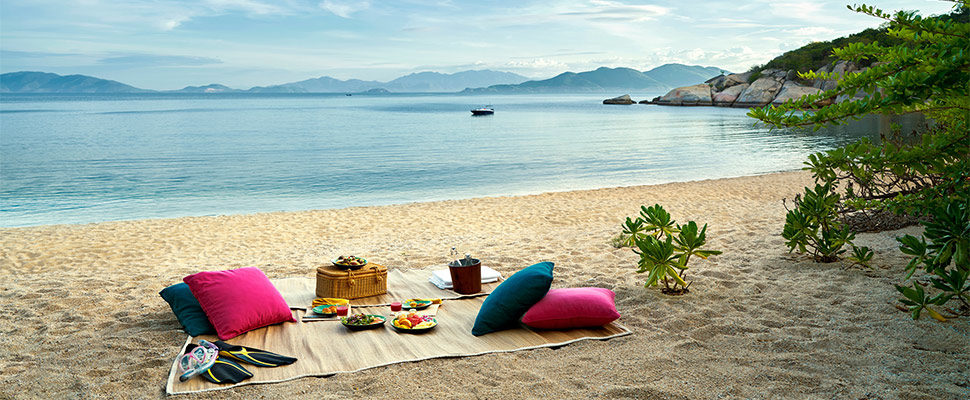

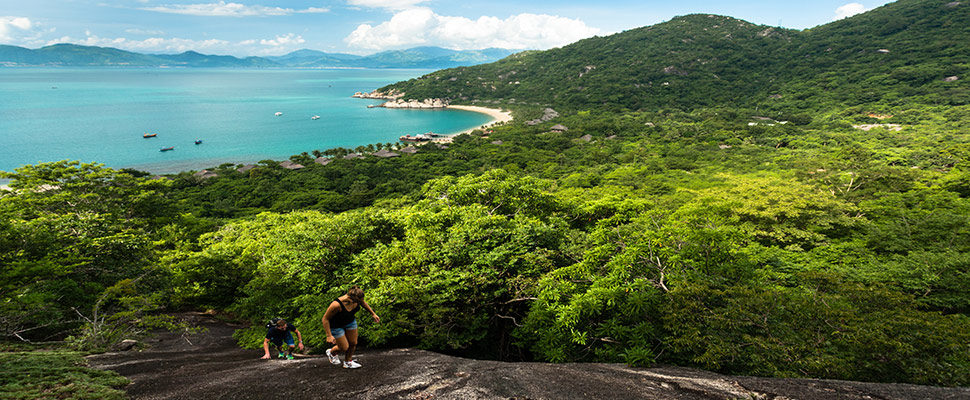
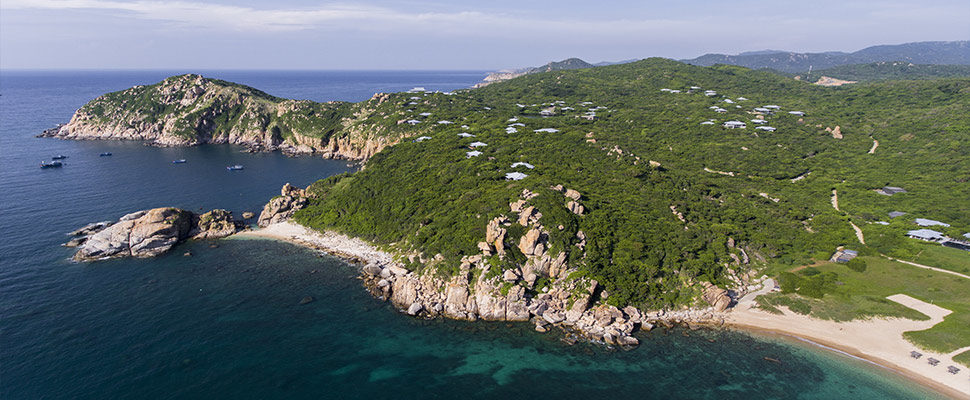

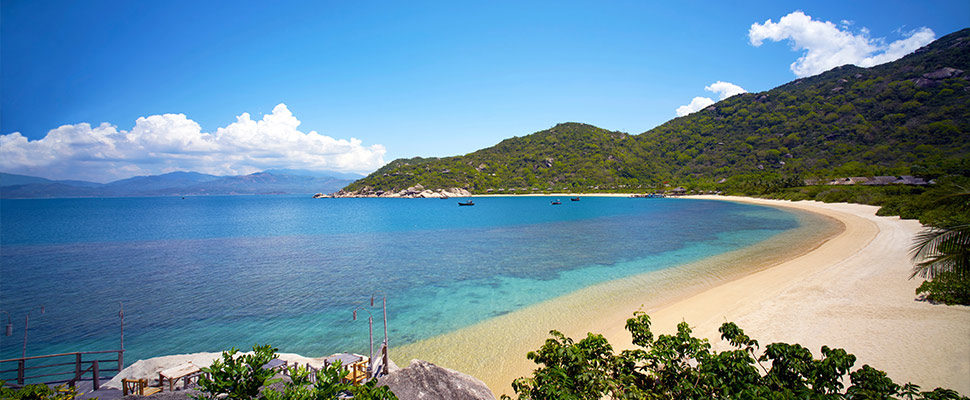
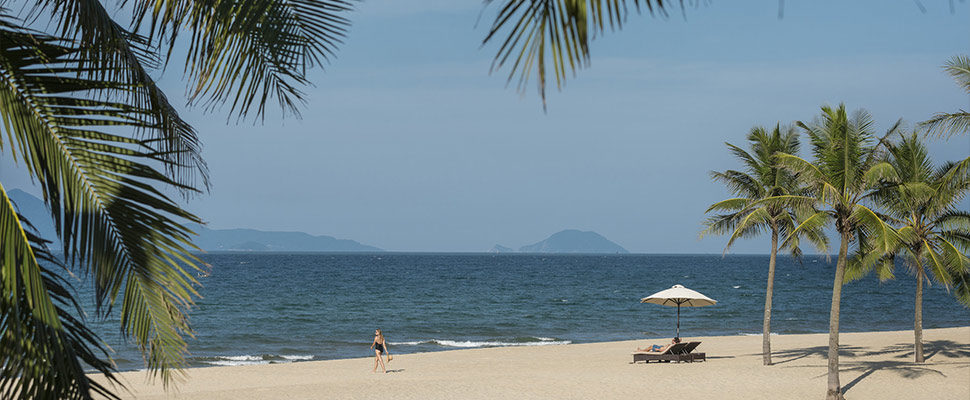
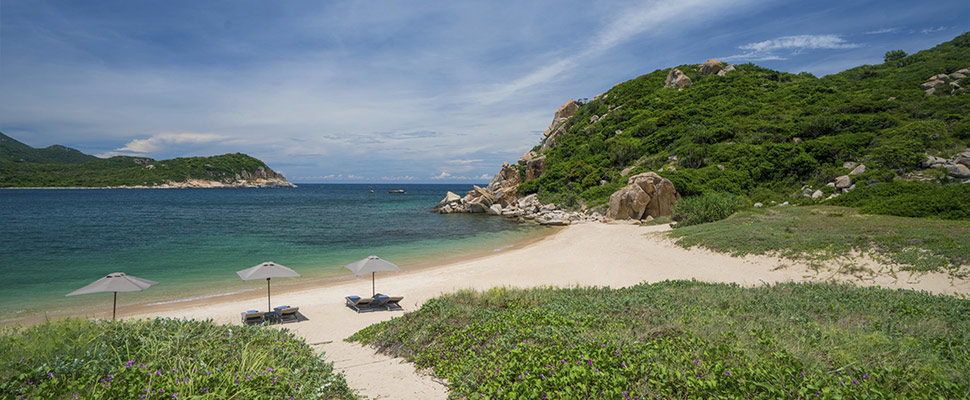
Central Vietnam Beaches
Central Vietnam is endowed with several beautiful beaches with white sand, turquoise water, and stunning views.
Central Vietnam’s beach-trimmed coast also plays host to two UNESCO World Heritage Sites, (Hue and Hoi An), which allows for some cultural exploration on top of your beach time.
Some bigger hotels are starting to appear, but the white-sand beaches are so long that they retain a quiet air. The waters are clear and turquoise, lending themselves to snorkelling and scuba diving, as well as fishing.
Away from the sea, Bach Ma National Park is a two-hour drive from Hoi An — the place the locals come to relax in the barely touched jungle, swimming in natural pools shaped by waterfalls.

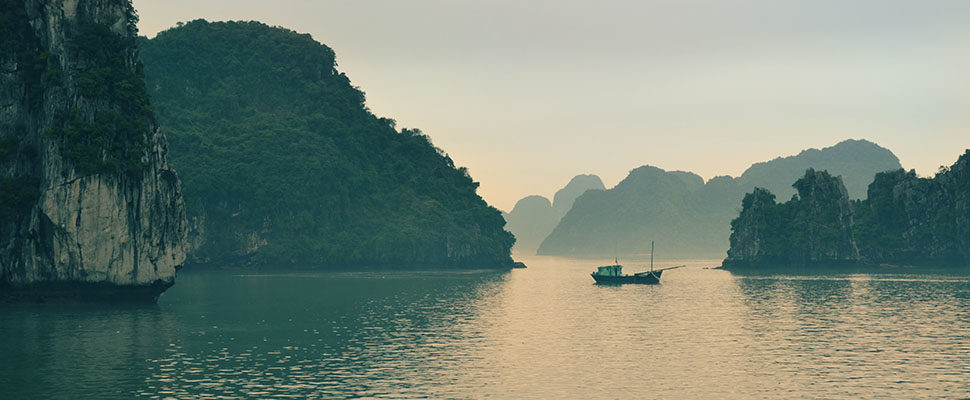
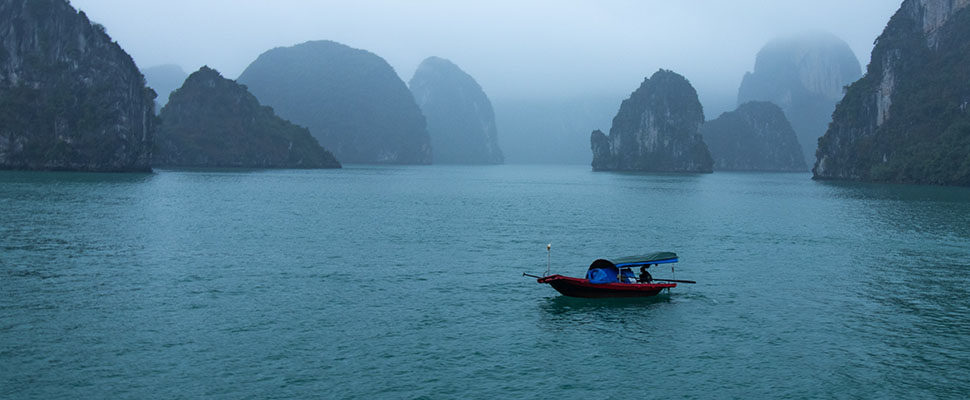


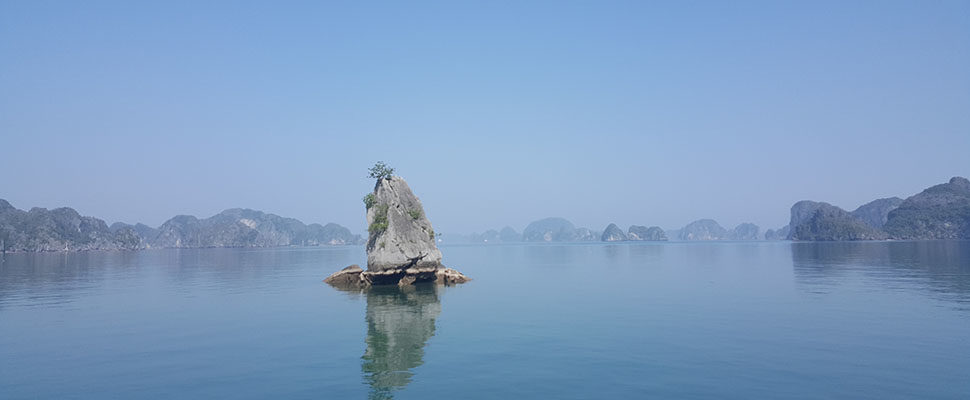
Halong Bay
Towering limestone pillars and tiny islets topped by forest rise from the emerald waters of the Gulf of Tonkin. Designated a World Heritage Site in 1994, Halong Bay’s scatter of islands, dotted with wind- and wave-eroded grottoes, is a vision of ethereal beauty and, unsurprisingly, northern Vietnam‘s number one-tourism hub.
Sprawling Halong City (also known as Bai Chay) is the bay’s main gateway, but its high-rises are a disappointing doorstep to this site. Most visitors opt for cruise tours that include sleeping on board within the bay, while a growing number are deciding to eschew the main bay completely, heading straight for Cat Ba Island from where trips to less-visited but equally alluring Lan Ha Bay are easily set up.
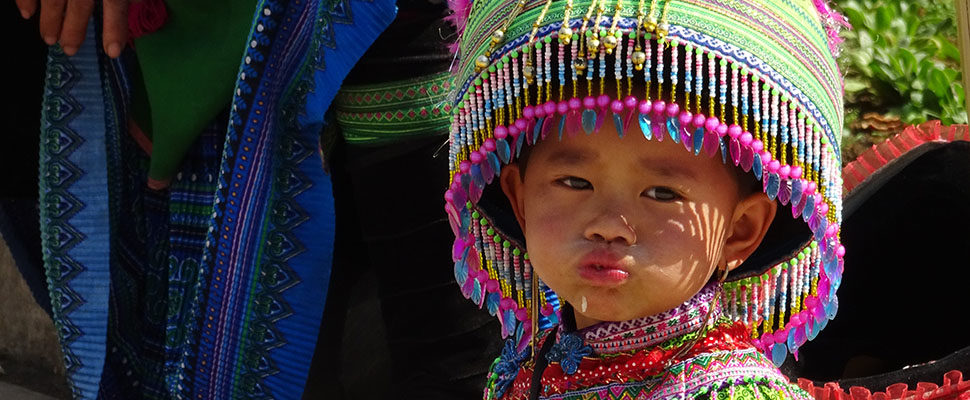
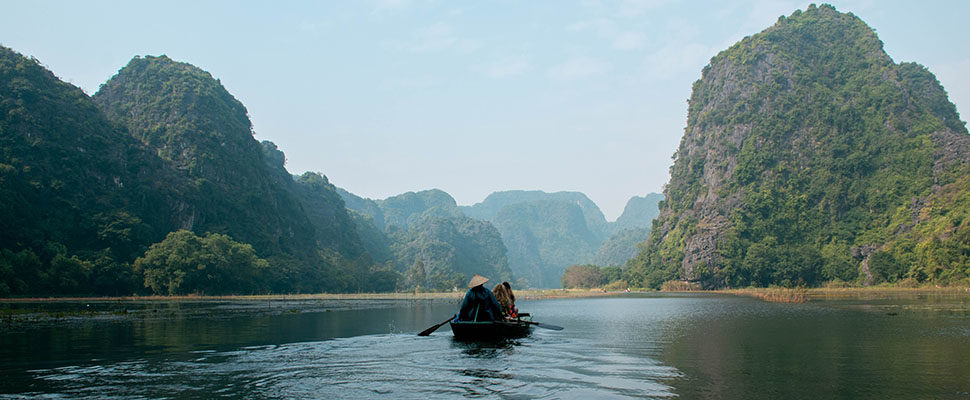
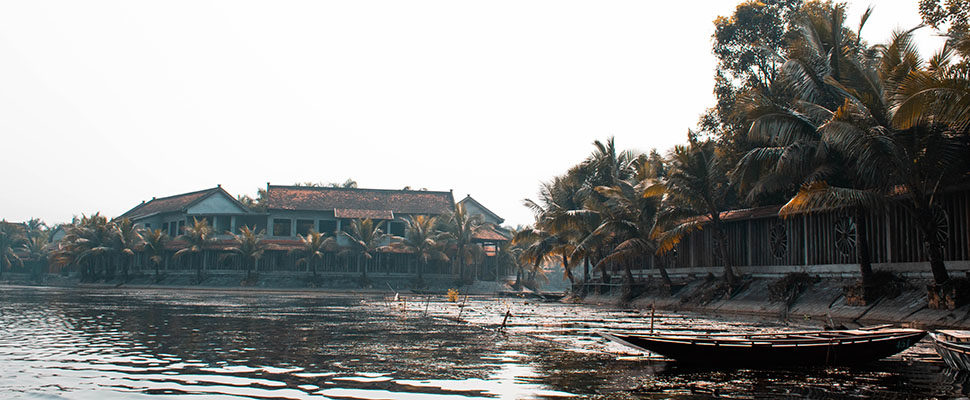
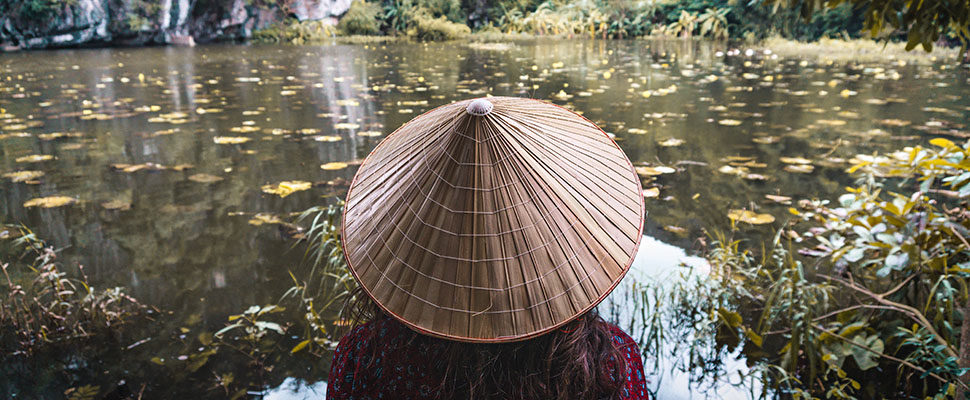
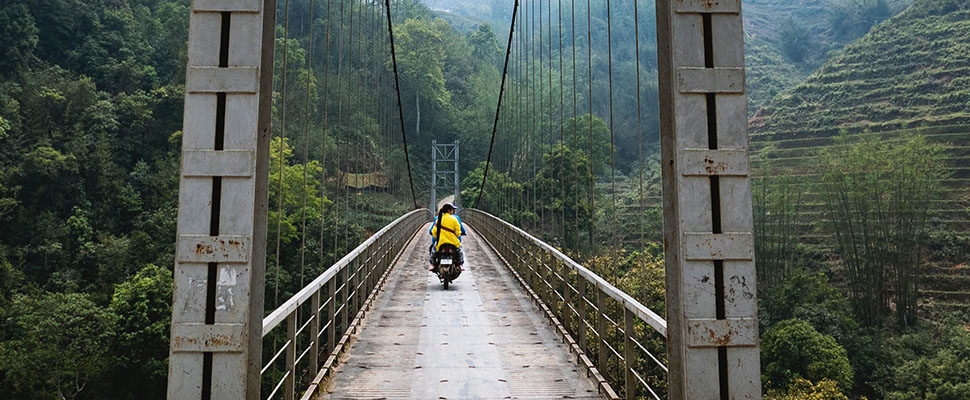
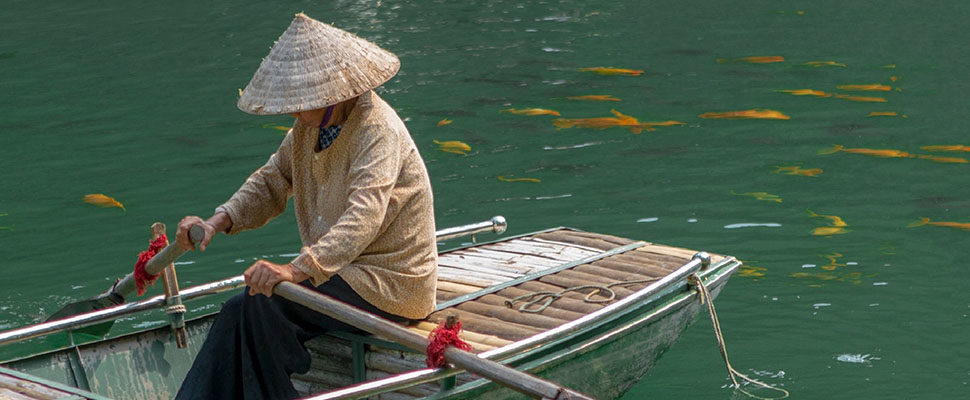
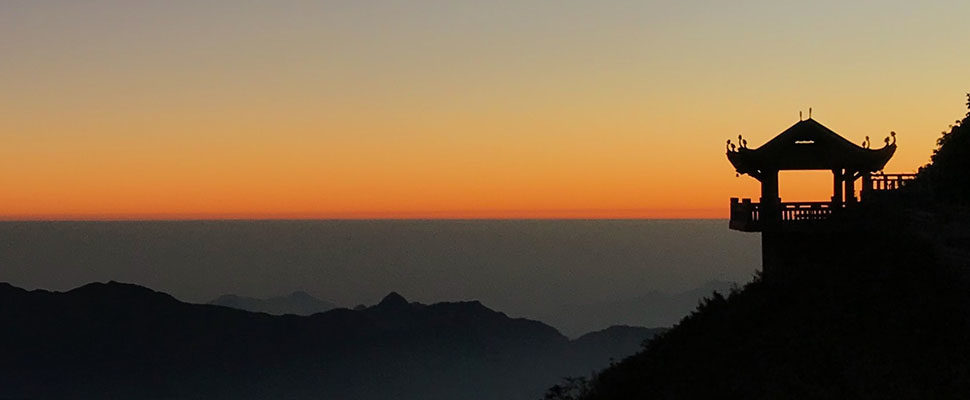
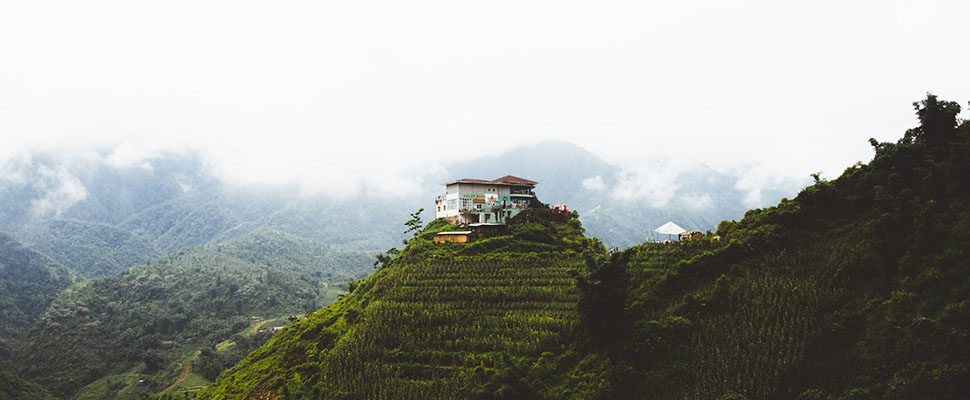


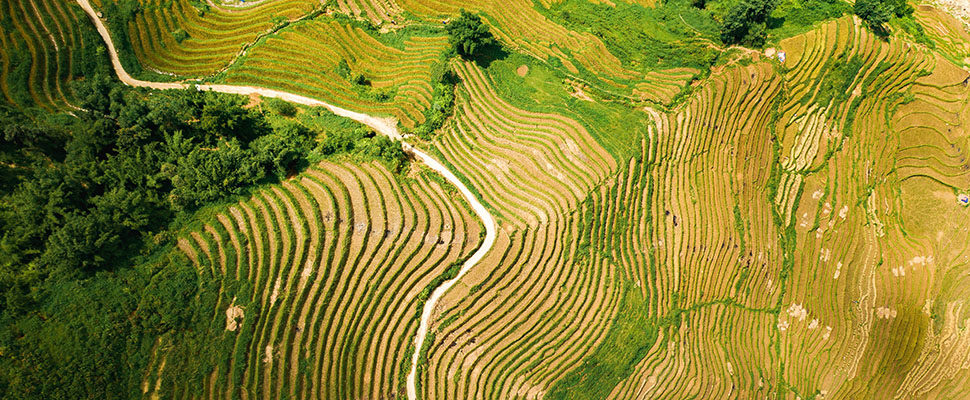
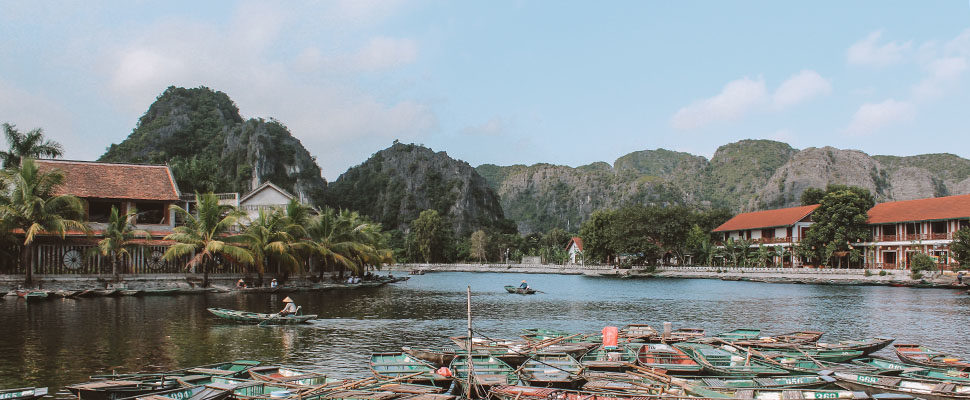


Northern Vietnam
This is Vietnam‘s big-sky country; a place of rippling mountains, cascading rice terraces and the winnowed-out karst topography for which the region is famed.
Halong Bay’s seascape of limestone towers is the view everyone’s here to see, but the karst connection continues inland, to Ba Be’s sprawling lakes and the knobbly topped peaks of Ha Giang, until it segues into the evergreen hills of the northwest highlands.
Not to be outdone by the scenery, northern Vietnam‘s cultural kaleidoscope is just as diverse. In this heartland of hill-tribe culture, villages snuggle between paddy-field patchworks outside of Sapa and the scarlet headdresses of the Dzao and the Black Hmong’s indigo fabrics add dizzying colour to chaotic highland markets.
The twisting ribbon-roads winding north from Hanoi reveal a rural world far removed from Vietnam‘s horns-a-honking big-city streets. If you’re up for some road-tripping, this is the place to do it.
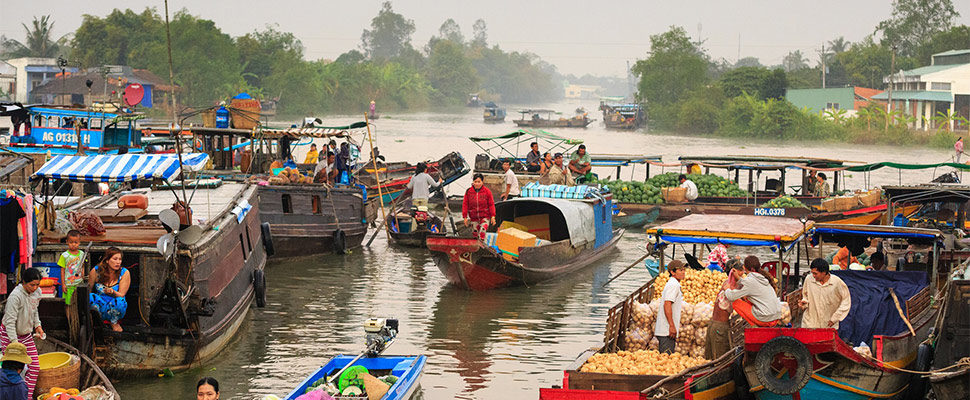
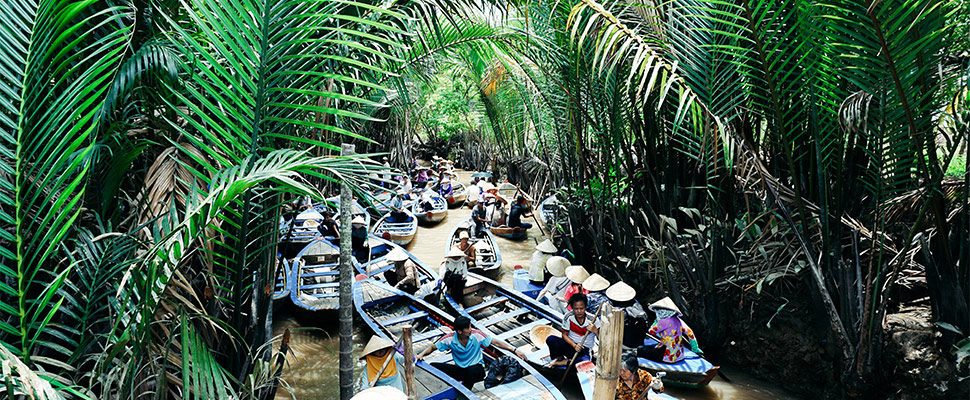
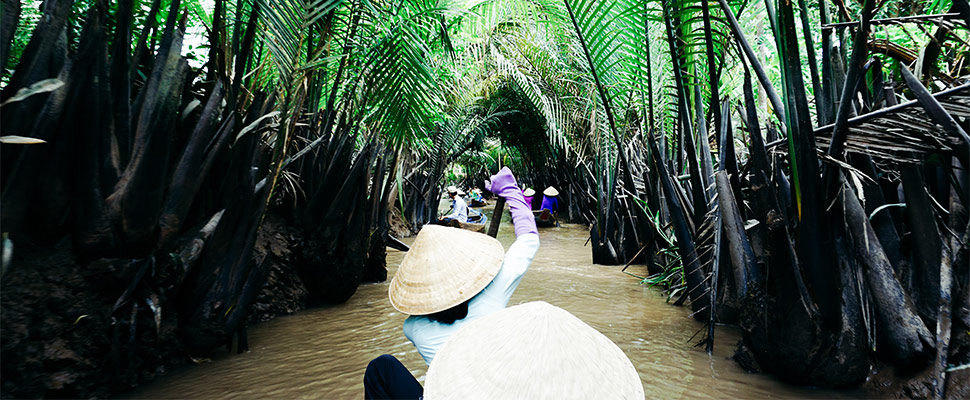


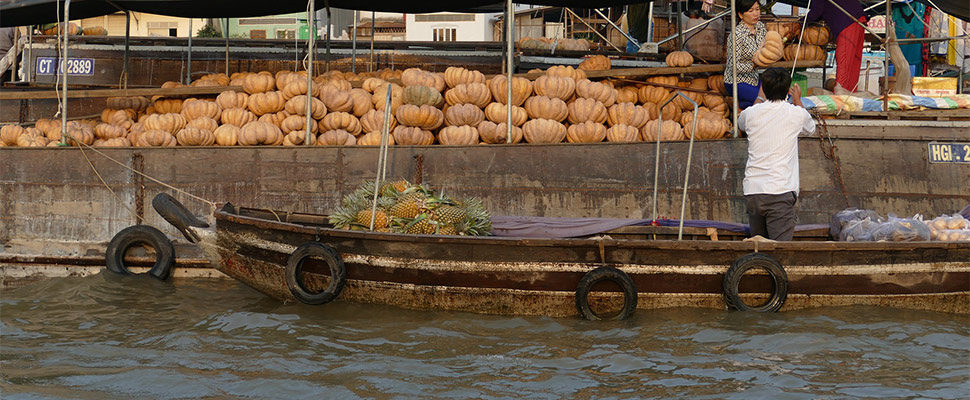
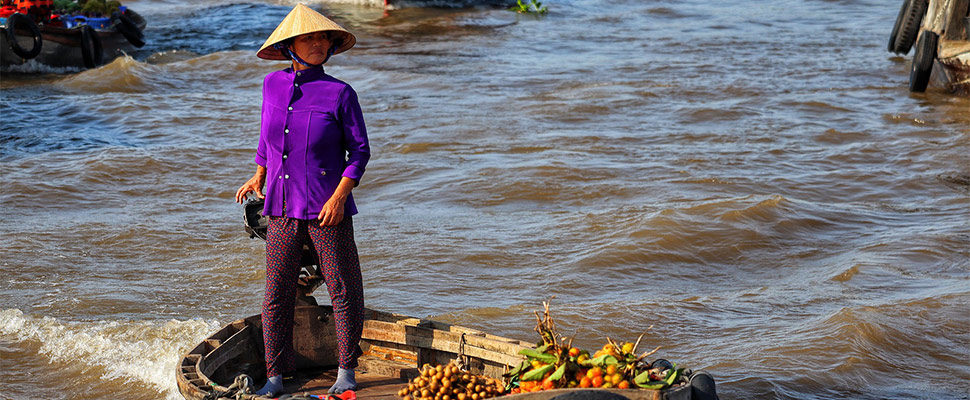
Mekong Delta
The ‘rice bowl’ of Vietnam, the delta is carpeted in a dizzying variety of greens. It’s a water world that moves to the rhythms of the mighty Mekong, where boats, houses and markets float upon the innumerable rivers, canals and streams that criss-cross the landscape like arteries.
The bustling commerce of its towns contrasts sharply with the languid, almost-soporific pace of life in the countryside. Here buffalo wallow in rice paddies, coconut- and fruit-laden boats float slowly along the mud-brown waters, and two-wheeled exploration of the narrow lanes is amply rewarded with a true taste of rural hospitality (and delicious river fish).
Elsewhere, mangrove forests teem with a wealth of bird life and bristle with the remains of Viet Cong bunkers, ornate Khmer pagodas and Buddhist temples reaching for the sky, while off-coast islands offer white-sand beaches and tropical hideaways to some, and pirate havens to others.
Where to stay
These are just a selection of the properties we can personally recommend. Please get in touch to hear more about our full portfolio.
Amanoi
Amanoi is situated on the dramatic coast line of Nui Chua National Park, one of the country’s largest natural conservation sites.
An Lam Saigon River
For those who prefer to avoid the busy pace of Ho Chi Minh City centre, An Lam Saigon River is a soothing sanctuary nestled under a tropical canopy on the banks of the river.
Anantara Hoi An Resort
Anantara Hoi An Resort has an enviable setting overlooking the Thu Bon River, less than a kilometre from the historic quarter of Hoi An.
Azerai Can Tho
Surrounded by serene waterways and lush mangroves, Azerai Can Tho is a new addition to the Mekong Delta, setting the bar to a new high. Built on its own private eight acre island, it is the perfect location to explore the floating markets and colourful orchards of the legendary Mekong Delta in style.
Azerai La Residence Hue
Nestled on the banks of the Perfume River, this elegant art deco style boutique hotel has uninterrupted views of Hue’s Imperial Citadel, over the water.
Four Seasons Resort The Nam Hai
With an idyllic location on Vietnam’s culturally rich central coast, The Nam Hai offers a portal to three extraordinary UNESCO World Heritage sites and a breezy respite on the country’s most celebrated beach.
Heritage Line Ginger
Heritage Line Ginger is a luxury wooden junk offering one or two night cruises around the beautiful Lan Ha Bay area of the Halong Archipelago.
Heron House
Heron House is a beautiful French colonial styled villa set in a tranquil location in Hoi An, on the coast in central Vietnam. A home away from home, the relaxed atmosphere and rural setting make it the perfect escape.
Hotel des Arts
Featuring paintings and antiques from the owner’s personal art collection, Hotel Des Arts effortlessly blends French Colonial elegance with contemporary flair. Refined guestrooms, world-class dining, plus a rooftop pool and buzzy bar make this the city’s most sought after boutique hotel.
Park Hyatt Saigon
Discover urban luxury with a combination of sophisticated design, handcrafted details, and modern-day comforts at Park Hyatt Saigon.
Six Senses Con Dao
Six Senses Con Dao, the first five-star resort in the archipelago, is contemporary in design and comprises 50 private pool villas reflecting the essence of a traditional fishing village.
Six Senses Ninh Van Bay
Six Senses Ninh Van Bay sits on a dramatic bay with golden sand and a backdrop of towering mountains. The family friendly resort has 62 pool villas, several bars and restaurants serving local and international specialities, complemented by delectable local seafood.
Sofitel Legend Metropole Hanoi
With a rich history and a host of famous guests including Graham Greene and Charlie Chaplin, the Sofitel Legend Metropole Hanoi is in our opinion the Capital’s finest heritage hotel.
Get in touch with us now to start planning your journey
Follow Us
Proudly ASSOCIATED WITH
















